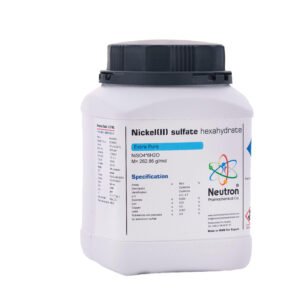Nitric acid 60%
| Formula | C6H12O6 |
| Chemical formula | C6H12O6 |
| molar mass | 198.17 g/mol |
| CAS number | 50-99-7 |
| HS Code | 17023051 |
| EC number | 200-075-1 |
| Storage | Store at 15 to 25 ° c |
| SDS | available |
| Odour | odourless |
| Form | solid |
| Color | colourless |
| p H value | ~6 – 7(100g/l 20°c) |
| Solubility in water | ~1000 g/l (20°c) |
| Solubility in ethanol | sparingly soluble (20°c) |
| Melting point | ~83°C |
| Assay | 97.5 to 102.0 | % | |
| Description | conforms | ||
| solubility | conforms | ||
| Identification | conforms | ||
| Color of solution | conforms | ||
| Clarity of solution | conforms | ||
| Specific rotation | +52.6 to + 53.2 | ° | |
| Acidity | ≤ | 0/3 | ml |
| Water | ≤ | 1 | % |
| Residue on ignition | ≤ | 0/1 | % |
| Chloride | ≤ | 0/018 | % |
| Sulfate | ≤ | 0/025 | % |
| Arsenic | ≤ | 1 | ppm |
| Heavy metals | ≤ | 5 | ppm |
| Dextrin | conforms | ||
| Soluble starch ,sulfates | conforms | ||
| Conductivity | ≤ | 20 | μs/cm |
Nitric acid 60% is a solution containing 60% by weight of nitric acid (HNO₃) in water, widely used in industrial processes, chemical synthesis, and laboratory applications.
🏭⚗️ Production
Concentrated nitric acid is produced industrially by the Ostwald process, involving the catalytic oxidation of ammonia followed by absorption in water. The 60% solution is then prepared by diluting concentrated acid with water under controlled conditions, either industrially or in labs.
🔬 Properties
Nitric acid 60% appears as a colorless to pale yellow liquid, highly corrosive and strongly oxidizing. Its density is approximately 1.30 g/cm³, and it has a sharp, acrid odor. The solution is miscible with water and many polar solvents.
🧪 Applications
This concentration of nitric acid is commonly used in metal etching, fertilizer production, nitration reactions, and as a reagent in laboratories. It is also used in explosives manufacturing and wastewater treatment.
⚠️ Safety
Nitric acid 60% is highly corrosive and toxic. It can cause severe burns to skin, eyes, and respiratory tract. Fumes are harmful if inhaled. Proper personal protective equipment including gloves, goggles, and fume hoods are essential. It should be stored in corrosion-resistant containers in a cool, well-ventilated area away from incompatible substances such as organic materials and reducing agents.





